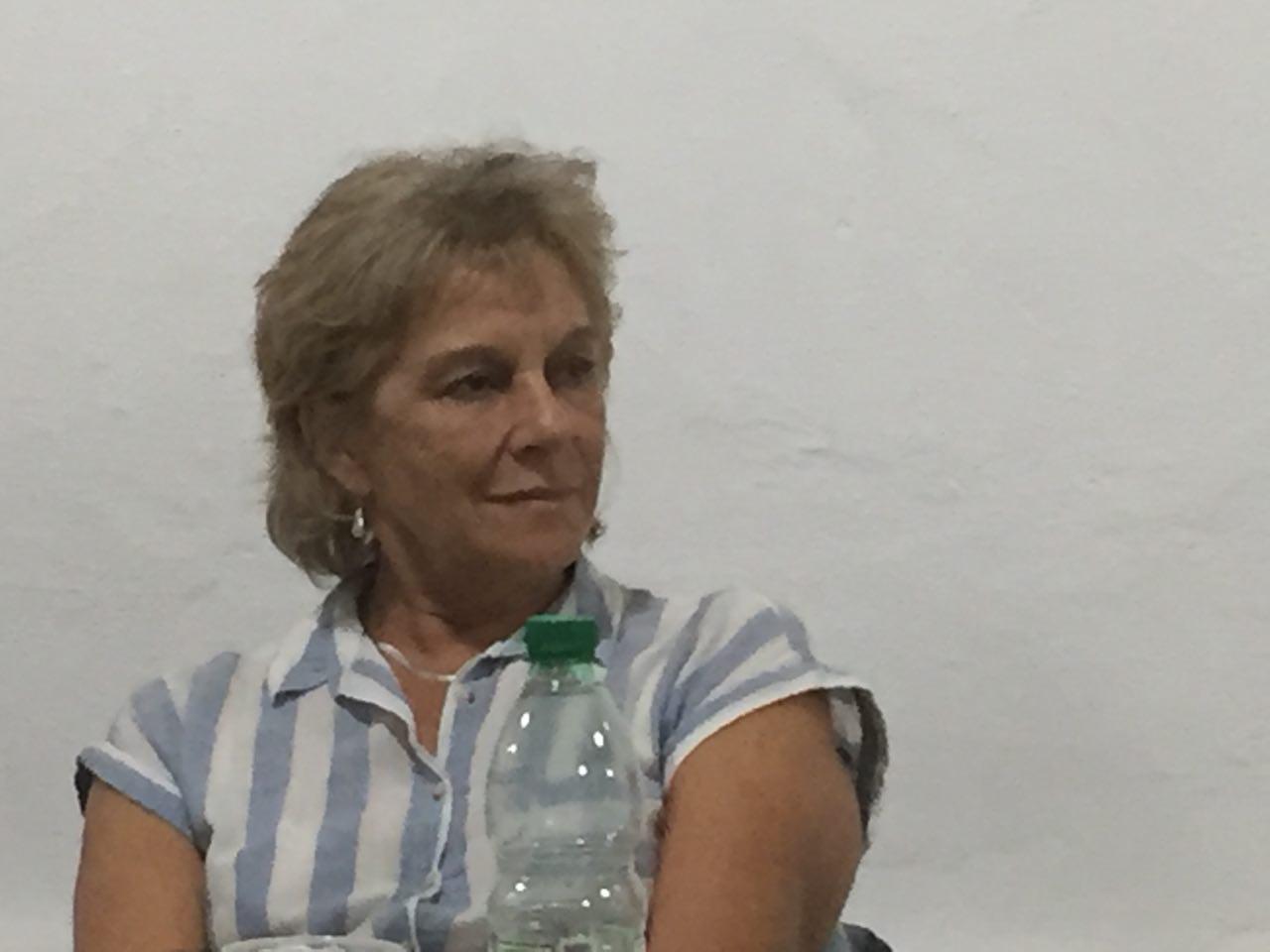|
Silvia Rodríguez Villamil
Silvia Rodríguez Villamil (1939 - August 17, 2003) was an Uruguayan historian, feminist, writer, as well as a political and social activist. Biography Silvia Rodríguez Villamil was born in Montevideo, 1939. In 1968, she published through ''Ediciones de la Banda Oriental'', her book ''Las mentalidades dominantes en Montevideo (1850-1900) : La mentalidad criolla tradicional''. This work represented an important contribution to the study of the mentality and idiosyncrasy of Uruguay, which had begun to be explored by Carlos Real de Azúa in ''El patriciado uruguayo'' (1961) and was continued by the work of José Pedro Barrán and Benjamín Nahum. A second volume by the author dedicated to "The urban and Europeanized mentality" was included in a posthumous reissue by the same publisher in 2008."Las mentalidades dominantes en Montevideo (1850-1900) , Silvia Rodríguez Villamil , R-T , Autores". www.entrelibros.com.uy. (in Spanish) Around 1983, together with other feminists such as ... [...More Info...] [...Related Items...] OR: [Wikipedia] [Google] [Baidu] |
Silvia Rodriguez Villamil
Silvia () is a female given name of Latin origin, with a male equivalent Silvio and English-language cognate Sylvia (given name), Sylvia. The name originates from the Latin word for forest, ''Silva'', and its meaning is "spirit of the wood"; the mythological god of the forest was associated with the figure of Silvanus (mythology), Silvanus. Silvia is also a surname. In Roman mythology, Silvia is the goddess of the forest while Rhea Silvia was the mother of Romulus and Remus. Silvia is also the name of one of the female innamorati of the commedia dell'arte and is a character of the ''Aminta'' written by Torquato Tasso. People with the given name *Queen Silvia of Sweden (born 1943), spouse of King Carl XVI Gustaf *Saint Silvia, Italian saint of the 6th century *Silvia Abascal (born 1979), Spanish actress *Silvia Abril (born 1971), Spanish actress and comedian *Silvia Agüero (born 1985), Spanish Roma writer and activist *Silvia Airik-Priuhka, Estonian writer and poetry translator ... [...More Info...] [...Related Items...] OR: [Wikipedia] [Google] [Baidu] |
Montevideo
Montevideo (, ; ) is the capital city, capital and List of cities in Uruguay, largest city of Uruguay. According to the 2023 census, the city proper has a population of 1,302,954 (about 37.2% of the country's total population) in an area of . Montevideo is situated on the southern coast of the country, on the northeastern bank of the Río de la Plata. A Portuguese garrison was established in the place where today is the city of Montevideo in November 1723. The Portuguese garrison was expelled in February 1724 by a Spanish soldier, Bruno Mauricio de Zabala, as a strategic move amidst the Spanish people, Spanish-Portuguese people, Portuguese dispute over the Río de la Plata Basin, platine region. There is no official document establishing the foundation of the city, but the "Diario" of Bruno Mauricio de Zabala officially mentions the date of 24 December 1726 as the foundation, corroborated by presential witnesses. The complete independence from Buenos Aires as a real city was not ... [...More Info...] [...Related Items...] OR: [Wikipedia] [Google] [Baidu] |
Carlos Real De Azúa
Carlos Real de Azúa (March 15, 1916 – July 16, 1977) was a Uruguayan lawyer, professor, essayist, sociologist and historian. Biography Real de Azúa Real was born into an old Uruguayan family, the first Real de Azúa having arrived at the Río de la Plata in 1794. He was a Catholic and, in his youth, an enthusiastic fascist and anti-liberal, an admirer of the Falange Española (a Spanish Fascist movement that was active in 1933-34), a fan of the right-wing journalist and politician Benito Nardone (who would later become president of Uruguay in 1960-61), and an outspoken critic of Batllism (the statist and redistributionist political philosophy of José Batlle y Ordóñez, president of Uruguay from 1903 to 1907 and 1911 to 1915). In his later life, Real described his early ideological journey as a beginning with “antitotalitarianism” and then progressing to “tercerismo” (i.e. “thirdism,” a via media between Soviet Communism and Western democratic capitalism), to � ... [...More Info...] [...Related Items...] OR: [Wikipedia] [Google] [Baidu] |
Benjamín Nahum
Benjamín Nahum (born 2 February 1937) is a Uruguayan historian, professor, and researcher. He is professor of Economic History at the University of the Republic, in Montevideo, the oldest and largest university in the country, as well as the second largest public university in South America In 1979 he was awarded the Guggenheim Fellowship Guggenheim Fellowships are Grant (money), grants that have been awarded annually since by the John Simon Guggenheim Memorial Foundation, endowed by the late Simon Guggenheim, Simon and Olga Hirsh Guggenheim. These awards are bestowed upon indiv .... His daughter was television journalist and writer Ana Nahum. Works *''Escritos de Historia Económica y Documental'' (13 vol.) *''Manual de Historia del Uruguay (1830–1990)'' *''Series de documentos de diplomáticos extranjeros'' (27 vol.) *''Bases económicas de la Revolución Artiguista'' (1964, with José Pedro Barrán) *''Historia social de las revoluciones de 1897 y 1904'' (1967, w ... [...More Info...] [...Related Items...] OR: [Wikipedia] [Google] [Baidu] |
Graciela Sapriza
Graciela Sapriza (born September 12, 1945) is a Uruguayan historian and educator. Her research focuses on the social, political and cultural participation of Uruguayan women in the 19th and 20th centuries. Biography Graciela María Sapriza Torres was born in Montevideo, September 12, 1945. In 1974, she obtained a Bachelor's Degree in Historical Sciences with a minor in Research from the University of the Republic of Uruguay. At the same institution, she obtained her Master's Degree in Human Sciences with a minor in Latin American Studies in 2002. Her thesis was titled "The eugenic utopia: race, sex and gender in population policies in Uruguay (1920-1945)". During her career, she has served as a teacher at institutions such as the University of the Republic of Uruguay, the University of Valle in Cali, Colombia, the University of Málaga in Málaga, Spain, the University of Gothenburg in Gothenburg, Sweden and the University of Chile in Santiago, Chile, among others. Since the 1980s ... [...More Info...] [...Related Items...] OR: [Wikipedia] [Google] [Baidu] |
1939 Births
This year also marks the start of the World War II, Second World War, the largest and deadliest conflict in human history. Events Events related to World War II have a "WWII" prefix. January * January 1 ** Coming into effect in Nazi Germany of: *** The Protection of Young Persons Act (Germany), Protection of Young Persons Act, passed on April 30, 1938, the Working Hours Regulations. *** The small businesses obligation to maintain adequate accounting. *** The Jews name change decree. ** With his traditional call to the New Year in Nazi Germany, Führer and Reich Chancellor Adolf Hitler addresses the members of the National Socialist German Workers' Party (NSDAP). ** The Hewlett-Packard technology and scientific instruments manufacturing company is founded by Bill Hewlett and David Packard, in a garage in Palo Alto, California, considered the birthplace of Silicon Valley. ** Philipp Etter takes over as President of the Swiss Confederation. ** The Third Soviet Five Year P ... [...More Info...] [...Related Items...] OR: [Wikipedia] [Google] [Baidu] |
2003 Deaths
This is a list of lists of deaths of notable people, organized by year. New deaths articles are added to their respective month (e.g., Deaths in ) and then linked below. 2025 2024 2023 2022 2021 2020 2019 2018 2017 2016 2015 2014 2013 2012 2011 2010 2009 2008 2007 2006 2005 2004 2003 2002 2001 2000 1999 1998 1997 1996 1995 1994 1993 1992 1991 1990 1989 1988 1987 1986 Earlier years ''Deaths in years earlier than this can usually be found in the main articles of the years.'' See also * Lists of deaths by day * Deaths by year (category) {{DEFAULTSORT:deaths by year ... [...More Info...] [...Related Items...] OR: [Wikipedia] [Google] [Baidu] |
Uruguayan Women Historians
Uruguayans () are people identified with the country of Uruguay, through citizenship or descent. Uruguay is home to people of different ethnic origins. As a result, many Uruguayans do not equate their nationality with ethnicity, but with citizenship and their allegiance to Uruguay. Colloquially, primarily among other Spanish-speaking Latin American nations, Uruguayans are also referred to as "'' orientals s in Easterners'" (). Uruguay is, along with much of the Americas, a melting pot of different peoples, with the difference that it has traditionally maintained a model that promotes cultural assimilation, hence the different cultures have been absorbed by the mainstream. Uruguay has one of the most homogeneous populations in South America; the most common ethnic backgrounds by far being those from Spain, Italy, Germany and France i.e. Spanish Uruguayans, Italian Uruguayans, German Uruguayans, French Uruguayans and Polish Uruguayans. Immigration waves Most Uruguayans desce ... [...More Info...] [...Related Items...] OR: [Wikipedia] [Google] [Baidu] |
21st-century Uruguayan Historians
File:1st century collage.png, From top left, clockwise: Jesus is crucified by Roman authorities in Judaea (17th century painting). Four different men (Galba, Otho, Vitellius, and Vespasian) claim the title of Emperor within the span of a year; The Great Fire of Rome (18th-century painting) sees the destruction of two-thirds of the city, precipitating the empire's first persecution against Christians, who are blamed for the disaster; The Roman Colosseum is built and holds its inaugural games; Roman forces besiege Jerusalem during the First Jewish–Roman War (19th-century painting); The Trưng sisters lead a rebellion against the Chinese Han dynasty (anachronistic depiction); Boudica, queen of the British Iceni leads a rebellion against Rome (19th-century statue); Knife-shaped coin of the Xin dynasty., 335px rect 30 30 737 1077 Crucifixion of Jesus rect 767 30 1815 1077 Year of the Four Emperors rect 1846 30 3223 1077 Great Fire of Rome rect 30 1108 1106 2155 Boudican revolt ... [...More Info...] [...Related Items...] OR: [Wikipedia] [Google] [Baidu] |


